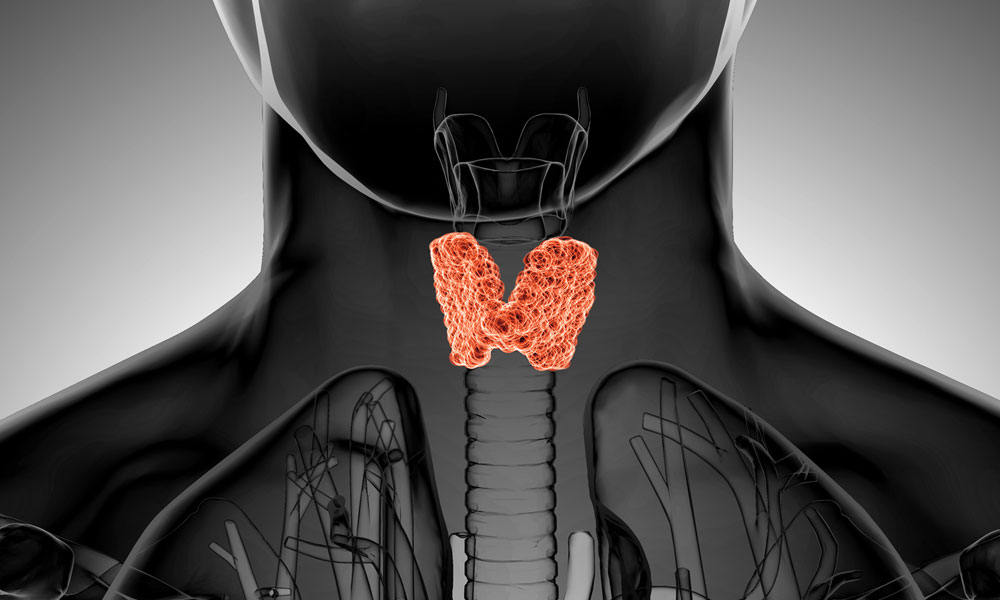Originally published in LabTalk (Volume 2, Issue 4, 2007), the quarterly newsletter of Aculabs.
Thyroid dysfunction is one of the most encountered problems in clinical practice. Adequate diagnosis and management require a thorough knowledge of the change in the thyroid function with age, and the effect of the Non-Thyroidal Illness (NTI) on laboratory results. Many of the thyroid diseases, especially in the aging population, are missed because of the atypical symptoms or the combined presentation of multiple systemic diseases. On the other hand, many patients with NTI are presented with abnormal thyroid tests which, in some cases, are misleading to the physician.
Hypothyroidism and hyperthyroidism are more prevalent in the elderly population than the younger one. Additionally, the incidence of sub-clinical hypothyroidism is much higher than overt hypothyroidism in the elderly. Several studies have shown that sub-clinical hypothyroidism is a strong indicator of risk for atherosclerosis and myocardial infarction in elderly women.
The first test ordered for thyroid dysfunction is TSH, which is a pituitary glycoprotein hormone that controls the biosynthesis of the thyroid hormones T4 and T3. Thorough understanding of the factors that cause fluctuation in TSH secretion, other than the pathophysiological factors, is very important to remember. Some of the factors are:
- Change in the dosage, potency, or timing when the patient takes the pill.
- Starting or stopping a high-fiber diet.
- Starting or stopping calcium or iron supplements.
- Eating too many soy products
- Eating goitrogenic foods (Brussels sprouts, turnips, radishes, cauliflower, cabbage, and kale).
- Change of seasons: TSH can rise in the colder months.
- Hormonal fluctuations.
- Pregnancy.
- Stress or illness.
- Lab changes or mix-ups.
And perhaps the most common cause is drug interaction. Below is a list of some of the medications that effect thyroid testing:
- Amiodarone (Cordarone): as much as 25% of patients who use amiodarone may experience abnormal thyroid function.
- Beta-blockers.
- Lithium: Long term lithium treatment results in goiter in up to 50% of patients, sub-clinical hypothyroidism occurs in 20% and overt hypothyroidism in a further 20%.
- Cortisol (or hydrocortisone) given orally transiently suppresses TSH secretion for a few hours.
- Dopamine: Suppress TSH.5.
- Antiepileptics: It is most marked with carbamazepine.
- NSAIDS and aspirin.
- Anabolic Steroids.
Because peripheral TSH concentration is a very sensitive and early marker of thyroid diseases, the need for sensitive assays and well-established reference ranges is growing. Recent recommendations to adjust the lower and upper limit of the reference range to aid in the diagnosis of subclinical thyroid dysfunction have appeared.
Aculabs has established our reference ranges using a study done in our lab using over 11,000 specimens. Based on our study, the reference range was 0.4 – 4.5 uIU/mL, and almost one-fifth of the study population who had TSH levels between 4.5 and 5.0 went on to develop overt hypothyroidism.
– Dr. Rita Khoury.
- R. H. Khoury, P. Gudaitis, P. M. Sluss, D. Gudaitis, R. Salmon, A. Gandhi, A. V. Gudaitis. 2007. Establishment of TSH Reference ranges in geriatric population: relevance to thyroid pathophysiology. AACC Annual Meeting, 2007
[hr]
Have a topic you’d want our Lab Director to cover in future posts? Send suggestions to info@aculabs.com!


Leave A Comment
You must be logged in to post a comment.